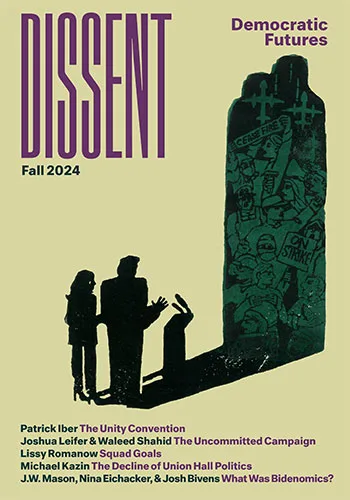Mind the Gap
Mind the Gap
Things are tough for American workers. Wage growth has flatlined. Unemployment and underemployment remain stubbornly high. Job growth is skewing towards low-wage, no-benefit services. And economic mobility—across generations, or as a reward for educational attainment—has slowed dramatically.
There is a persistent and casual tendency to ascribe all of this to general economic troubles: the natural limits of post-industrial growth, leaner and meaner competition in a global economy, or the “tough times” of our last (and lingering) recession. As important as these are, they miss a big part of the story.
As the graphic below shows, economic productivity in the United States has sustained a consistent upward trajectory since the end of the Second World War. For the first generation of this era, economic growth lifted with it the wages and earnings of most Americans (the red line on the graph shows the real hourly compensation [wages and benefits] of production and nonsupervisory workers). Beginning in the mid-1970s, wage growth slowed—even as the economy continued to grow.
It is not the health of the economy, in other words, that has battered workers—but a dramatic change in the distribution of its rewards. The gap between the two lines represents inequality. And the wedges prying the lines apart, as Larry Mishel has underscored, are essentially political. The collapse of organized labor and a slipping minimum wage erode wage growth at the bottom; financialization and deregulation pull earnings toward the top.
These trends—and their implications–can be teased out by adjusting the index year or date range on the graph. Moving the index year to 1972 (so that 1972=100), for example, shows productivity growth (about 80 percent) and compensation growth (barely 11 percent) from that point forward. Changing the date range to 1947-1972 shows an average annual increase in compensation of 2.69 percent over that 25 year span. Sliding that range forward to the next 25 years (1973-1999) shows an average annual increase of only .02 percent.
But, whichever way you slice it, the basic pattern is clear. For the first postwar generation, we grew together. Since then, we have grown apart.
Colin Gordon is a professor of history at the University of Iowa. He writes widely on the history of American public policy and is the author, most recently, of Growing Apart: A Political History of American Inequality, published by the Institute for Policy Studies at www.inequality.org




